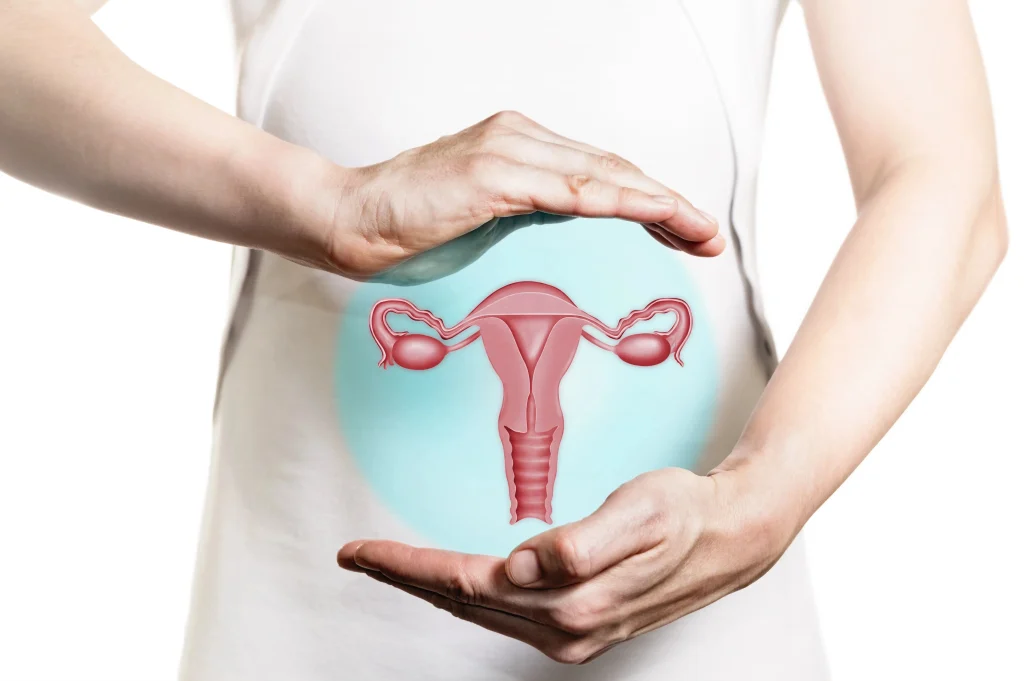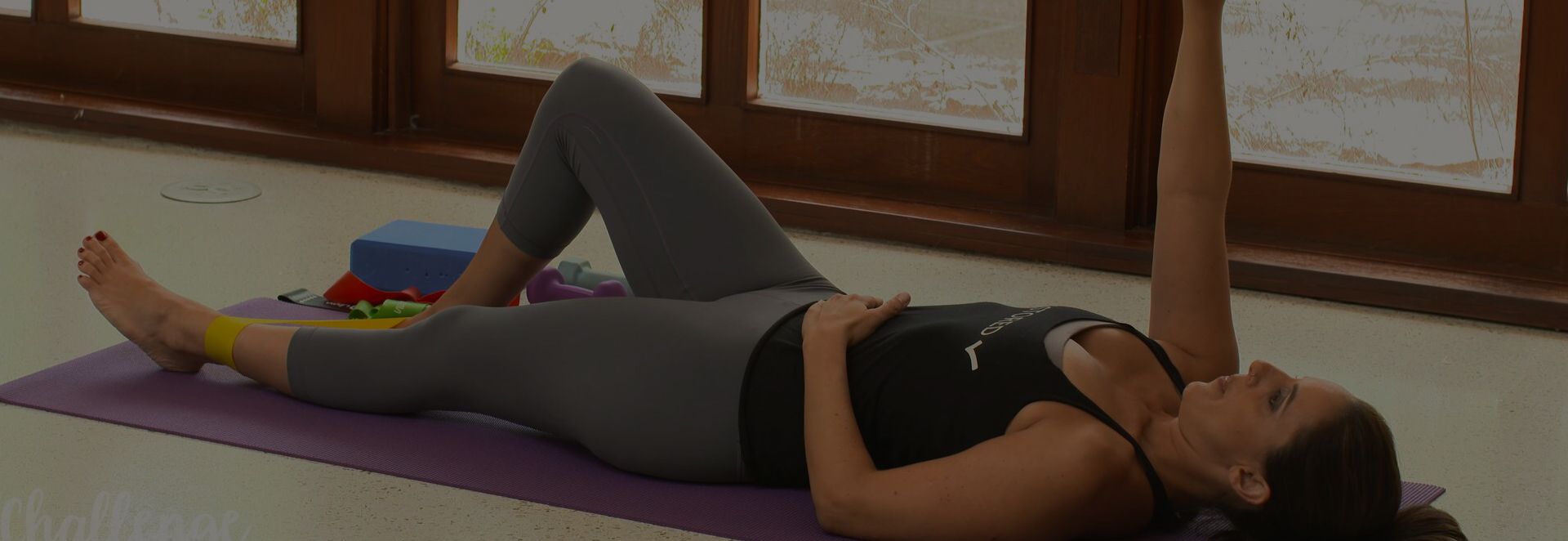Resources
- Finding Relief from Pain During Sex: Pelvic Floor Exercises That Work
- The Connection Between Exercise and Bloating: What Every Professional (and Their Clients) Need to Know
- How to Strengthen Pelvic Floor Safely
- Pelvic Floor Exercises for Constipation: Awareness, Movement, and Nervous System Relief
- High-Tone Pelvic Floor Dysfunction: Symptoms, Causes & Relief Tips
- How Menopause Affects the Pelvic Floor: Symptoms, Support & Hormonal Impact
- Tailbone Wagging for Tailbone Pain Relief and Pelvic Floor Mobility
- The Power of Tremoring: How Tension Release Exercises Support Your Nervous System
- Pelvic Floor Postpartum Exercises for Faster Recovery
- Navigating Coccyx Pain in Pregnancy: A Trimester-by-Trimester Guide
- Understanding Coccyx Pain: Symptoms, Causes, Healing and Prevention
- Pilates and Pelvic Floor Dysfunction: Is It the Solution You’re Seeking?
- 5 Pilates Pelvic Floor Exercises You Don’t Want to Leave Out
- Pelvic Floor Massage: A Comprehensive Guide
- Does Pilates Strengthen Pelvic Floor Muscles? A Comprehensive Guide
- Hypermobility and Pelvic Floor Health: What You Need to Know
- The Foot to Pelvic Floor Connection: A Whole-Body Approach to Movement and Health
- Understanding Pelvic Floor Pain After Running: Causes and Solutions for Professionals
- Top 5 Exercises to Strengthen the Pelvic Floor
- Do Squats Strengthen Pelvic Floor Muscles? Insights for Movement Professionals
- 5 Things I Wish People Knew About Your Pelvic Floor & Orgasm
- Pelvic Floor Tension: Everything You Need to Know
- How Running and Pelvic Floor Health Are Interconnected: What Every Runner Should Know
- Does Running Strengthen Pelvic Floor Muscles? Myths vs. Facts
- Understanding Urine Leakage Causes: Why It Happens and How to Manage It
- How to Strengthen Your Pelvic Floor: The Ultimate Guide
- Strengthening and Restorative Yoga Poses for Full Body Health
- Understanding Queefing: Causes, Symptoms, and Simple Prevention Tips
- How Do You Know if You Have a Weak Pelvic Floor
- What Does Pelvic Floor Pain Feel Like?
- How Can I Strengthen My Pelvic Floor Without Kegels?
- Pelvic Floor Stretches | 5 Quick Ways To Relax Your Pelvis
- Pelvic Floor Specialist | Finding Help To Heal Your Pelvis
- Is Pelvic Floor Repair Major Surgery? | Pelvic Health Guide
- Pelvic Floor Exercise
- How to Strengthen Pelvic Floor
- Pelvic Floor Therapy | Improving Your Pelvic Health
Resources
- Finding Relief from Pain During Sex: Pelvic Floor Exercises That Work
- The Connection Between Exercise and Bloating: What Every Professional (and Their Clients) Need to Know
- How to Strengthen Pelvic Floor Safely
- Pelvic Floor Exercises for Constipation: Awareness, Movement, and Nervous System Relief
- High-Tone Pelvic Floor Dysfunction: Symptoms, Causes & Relief Tips
- How Menopause Affects the Pelvic Floor: Symptoms, Support & Hormonal Impact
- Tailbone Wagging for Tailbone Pain Relief and Pelvic Floor Mobility
- The Power of Tremoring: How Tension Release Exercises Support Your Nervous System
- Pelvic Floor Postpartum Exercises for Faster Recovery
- Navigating Coccyx Pain in Pregnancy: A Trimester-by-Trimester Guide
- Understanding Coccyx Pain: Symptoms, Causes, Healing and Prevention
- Pilates and Pelvic Floor Dysfunction: Is It the Solution You’re Seeking?
- 5 Pilates Pelvic Floor Exercises You Don’t Want to Leave Out
- Pelvic Floor Massage: A Comprehensive Guide
- Does Pilates Strengthen Pelvic Floor Muscles? A Comprehensive Guide
- Hypermobility and Pelvic Floor Health: What You Need to Know
- The Foot to Pelvic Floor Connection: A Whole-Body Approach to Movement and Health
- Understanding Pelvic Floor Pain After Running: Causes and Solutions for Professionals
- Top 5 Exercises to Strengthen the Pelvic Floor
- Do Squats Strengthen Pelvic Floor Muscles? Insights for Movement Professionals
- 5 Things I Wish People Knew About Your Pelvic Floor & Orgasm
- Pelvic Floor Tension: Everything You Need to Know
- How Running and Pelvic Floor Health Are Interconnected: What Every Runner Should Know
- Does Running Strengthen Pelvic Floor Muscles? Myths vs. Facts
- Understanding Urine Leakage Causes: Why It Happens and How to Manage It
- How to Strengthen Your Pelvic Floor: The Ultimate Guide
- Strengthening and Restorative Yoga Poses for Full Body Health
- Understanding Queefing: Causes, Symptoms, and Simple Prevention Tips
- How Do You Know if You Have a Weak Pelvic Floor
- What Does Pelvic Floor Pain Feel Like?
- How Can I Strengthen My Pelvic Floor Without Kegels?
- Pelvic Floor Stretches | 5 Quick Ways To Relax Your Pelvis
- Pelvic Floor Specialist | Finding Help To Heal Your Pelvis
- Is Pelvic Floor Repair Major Surgery? | Pelvic Health Guide
- Pelvic Floor Exercise
- How to Strengthen Pelvic Floor
- Pelvic Floor Therapy | Improving Your Pelvic Health
How Pelvic Floor Health Is Related to the Process of Moving from Arousal to Orgasm
By Lauren Ohayon 09/02/2024
6 Min Read
The most important part of your body when it comes to sexual pleasure is your brain. And the connection between the muscles of the pelvic floor and the brain is part of what makes orgasms pleasurable. The pelvic floor participates in the full sexual response cycle from arousal to orgasm.
Table of Contents
Pelvic Floor Health and Sex
Your pelvic floor is the collection of muscles, connective tissues, and nerves that support the organs of the pelvis, forms the base for the respiratory system, and helps stabilize your body as part of the core system. Anything that happens in your pelvis can be a factor in pelvic floor health, and any kind of injury or trauma to the pelvic floor muscles can affect the function of the systems supported by the pelvic floor.
At the same time, sexual desire, arousal, and ability to orgasm is primarily a brain function–while we traditionally think of sex as a series of physiological responses to physical stimuli, the truth is that sexual function is more complicated than most people think.
The traditional sexual response cycle as described by Masters and Johnson in the 1960s and modified over the last several decades of research involves four stages:
- Desire
- Excitation (Arousal)
- Orgasm
- Resolution
- Each of these phases is marked by physiological changes.
- Desire: Interest in sex
- Arousal: Increased blood flow to the pelvic floor and genitals in particular; vaginal lubrication increases and clitoris swells; penis becomes erect and may exude small amounts of fluid; pelvic floor muscles begin contracting rhythmically; tension increases throughout the body
- Orgasm: involuntary, rhythmic muscle contractions throughout the body, including the genitals, accompanied by a feeling of released tension and euphoria; ejaculation frequently accompanies orgasm in people with penises; people with vaginas may or may not also expel fluids
- Resolution: Return to baseline physical state
Notably, many people with vaginas find that the “resolution” phase can be minimal before the cycle can begin again, or that multiple orgasms are possible without having to wait for a refractory period.
However, our current understanding of sexual response is that it is more than a physiological series of reactions. Desire, in particular, is primarily a psychological process, and depends on numerous factors that are beyond the scope of this piece. For an extensive guide to what is called the dual control model of sexual response, please see Emily Nagoski’s book Come As You Are.

The Role of the Pelvic Floor in Arousal
Why is it important to point out that this is both a mind and body process? What happens in the mind affects the body, and vice-versa. They are not separate entities. If the muscles of the pelvic floor cannot for any reason participate in the arousal process, some part of the cycle is likely to be interrupted or absent. And sometimes the interruption is a mental issue, often stemming from trauma, a sense of disconnection from the body, or a lack of desire, even if you choose to engage in sexual activity from a place of neutrality, not spontaneous desire.
When you are engaging in sexual activity, blood flow increases to the pelvic floor muscles, and they begin moving rhythmically to build tension toward climax/orgasm. Often, you can feel desire set in and arousal increase in a variety of ways: you may observe that the genitals are engorged and/or lubricated, a sense of “throbbing” or pulsating in the pelvic floor or specific genital areas. Your breath may shorten, and your skin may become more sensitive to touch, especially in erogenous zones like the nipples and low back.
Pelvic floor muscles that have been trained to respond to everyday loads will make this process go more smoothly. Part of pelvic floor training is mapping your pelvic floor, from the outside and inside. You can try mapping your pelvic floor on your own, or follow my free guide here. The guide is geared toward pros, but anyone can benefit from this work. Doing this kind of body-mapping work will help the brain connect to sensations better–which means your body will be more responsive during sex, and you’ll know better what “normal” looks and feels like for your individual body.
Arousal continues as sexual activity continues, and usually builds toward a climax. Climax does not always include orgasm. Climax involves a physical sense of released tension, or the sense of arousal reaches a peak and dissipates.
Pelvic Floor Contributions to Orgasm
To reiterate my point one more time: your pelvic floor is only one piece of the orgasm puzzle, and it is not the most important piece. The most important piece is your brain. Are you having fun? Do you feel good? Do you feel connected with your partner(s) and yourself? Those answers will determine the quality and intensity of your orgasm.
However, your brain and body are connected. Pelvic floor muscles that have the capacity to respond to the demands placed on them will respond better to the brain’s signals. The force and duration of your orgasm, while primarily controlled by your mental state, will be experienced by your body more powerfully if your pelvic floor muscles are well-coordinated. If you have a good sense of what’s happening in your pelvic floor most of the time, orgasms are more easily perceived. If your pelvic floor feels mysterious and unknown to you, your orgasms are likely to lack the intensity that is possible. There are plenty of ways to learn how to tap into a deeper sense of pelvic floor and sensation awareness during the arousal stage of sex; it doesn’t matter how strong your pelvic floor is if your mind can’t connect with it. This video, for example, can help you find your G-spot. Once you make that connection, you’ll be able to tune into more of your body during sex.
Common Pelvic Floor Disorders and Sexual Dysfunction
While there are numerous mental health reasons for feeling disconnected from your pelvic floor (I would also include medications that affect libido, since they inhibit your body’s sense of desire), there are several physical disorders that can also contribute to a sense of disconnection from the pelvic floor.
Common pelvic floor disorders include:
- Incontinence: the lack of ability to control the flow of urine or expulsion of feces
- Pelvic organ prolapse: the displacement of one or more of the organs of the pelvis, which can cause discomfort and a feeling of dragging or heaviness in the pelvis
- Hypertonic or overactive pelvic floor muscles: muscles that cannot relax can make penetrative sex painful, and do not allow the pelvic floor to create the kinds of pulsations that are characteristic of arousal and orgasm
These conditions can disrupt your ability to achieve arousal and orgasm by keeping your mind focusing on what is wrong with your body, instead of what feels good. You may experience stress and tension as you prepare to engage in sexual activity, which will detract from the pleasure of the moment. If you are experiencing these issues: seek help from a medical provider who can diagnose you and help you understand exactly what’s happening in your pelvic floor. Once you’ve done so you will likely be referred to physical or occupational therapy. Some people find they have the best results using a program like Restore Your Core® to maintain and expand on the work that they do with their PT or OT.
Strengthening Pelvic Floor Health for Better Sexual Experience
The first place that I recommend people start is with getting to know your pelvic floor better: this clitoral nodding exercise is one place to start. You can’t strengthen something your brain can’t connect to. If you tried to strengthen your arms but could not feel your arms moving, you would not be able to use them well.
Once you have a sense of connection with your pelvic floor, you can use specific kinds of exercises–such as bridges, clams, child’s pose, and slow Kegel variations–to help your pelvic floor become stronger and more responsive. Here is a collection of exercises to help you strengthen your pelvic floor muscles.
In addition to specific exercises, I encourage you to occasionally just spend time noticing how your pelvic floor feels in different situations. Do you feel especially tense or tight in particular settings? When do you feel relaxed and prepared to respond? When do you feel too relaxed?
As far as general lifestyle advice goes, better sex comes from a life that feels fulfilling. Remember that your body is your home and a place of delight and wonder, and that it is always changing. Sometimes that change can feel overwhelming. Sometimes it doesn’t feel positive. But your body can be a place to ground yourself and find connection with yourself. And that includes your pelvic floor.

Why Is Pelvic Floor Health Important?
Your pelvic floor is a major player in your overall well-being: it influences the function of more than just your bladder, no matter how many people reduce the idea of pelvic floor dysfunction to “sneeze pee.” Having a mind-body connection with your pelvic floor benefits you in multiple ways, including helping you access more and better pleasure when it comes to sexual activity (plus, as part of the core system, it helps support you if you’re getting into more vigorous and adventurous positions). While not everyone has a high desire for sexual pleasure, if you have any desire at all, being able to feel and enjoy as much as possible is more satisfying. Remember to seek professional help if you find that connecting with your pelvic floor causes pain or psychological distress. And keep in mind that changes that seem negative are often temporary and improve with time. You can rediscover and enjoy your sexual self, even if you’re currently feeling disconnected.
FAQ
1. How quickly can pelvic floor training impact sexual arousal and orgasm quality?
You might notice improvements in arousal and orgasm quality within a few weeks of consistent pelvic floor training, though it may take a few months for significant changes.
2. Are there specific pelvic floor exercises that are more effective for sexual function in women?
A variety of exercises can help, but which ones are most effective will depend on whether your pelvic floor muscles are already holding a lot of tension. Kegel exercises, which involve contracting and relaxing the pelvic floor muscles, are particularly effective for people whose pelvic floor muscles are not overactive. For most people, exercises targeting the glutes, inner thighs, hip flexors, and the coordination of the core and breath will be more effective than Kegels.
3. What role does the pelvic floor play in the emotional aspects of sexual experience?
The pelvic floor is closely tied to emotional well-being; stress and anxiety can cause muscle tension, impacting sexual pleasure and the ability to achieve orgasm.
4. How often should one engage in pelvic floor exercises to see improvement in sexual functions?
Engaging in pelvic floor exercises daily or at least several times a week can lead to noticeable improvements in sexual function over time.
5. What are the first signs of pelvic floor dysfunction that might affect sexual health?
Early signs include urinary leakage, pelvic pain, discomfort during intercourse, or a lack of sensation.
6. What professional fields specialize in pelvic floor health and sexual function?
Specialties include pelvic floor physical therapy, urology, gynecology, and sex therapy.



